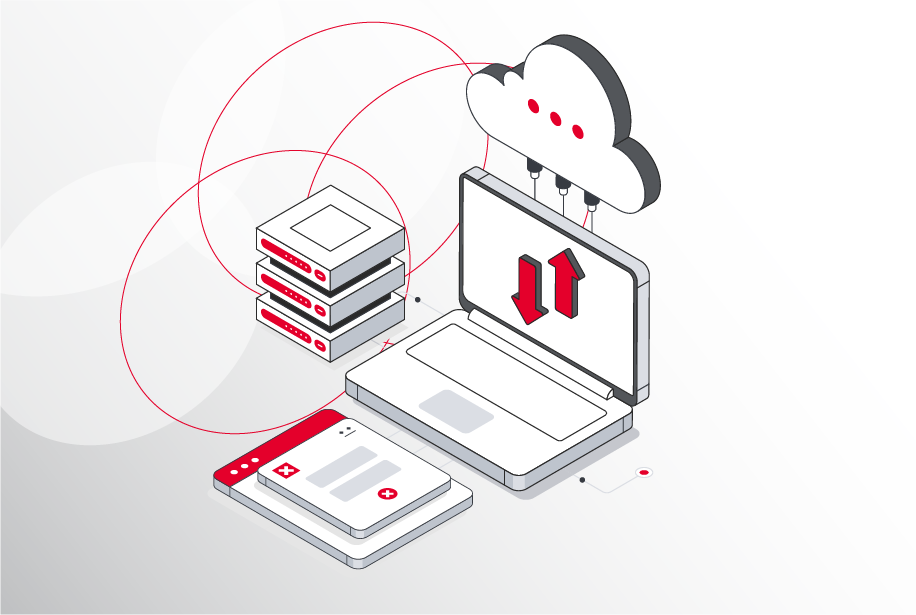How to transform your outdated applications into modern, cloud-native solutions with Azure.
Why modernise your legacy apps?
Legacy applications are often the backbone of many businesses, but they also pose significant challenges in terms of maintenance, scalability, security, and innovation. Modernising your legacy apps can help you overcome these challenges and unlock new opportunities for growth, efficiency, and customer satisfaction. Some of the benefits of app modernisation include:
- Reducing operational costs and complexity by moving to a cloud-based infrastructure
- Improving performance, reliability, and availability by leveraging cloud-native features and services
- Enhancing security and compliance by adopting the latest standards and best practices
- Accelerating innovation and agility by enabling faster and more frequent updates and deployments
- Delivering better user experiences by optimizing the app design and functionality for modern devices and platforms
- Help attract and retain engineering talent by creating opportunity to work with modern development stack and offering upskilling paths to existing employees

Azure’s app modernisation tools and how to use them
Azure is Microsoft’s cloud computing platform that offers a comprehensive set of tools and services for app modernisation. You can use Azure to migrate, refactor, rearchitect, or rebuild your legacy apps and transform them into modern, cloud-native solutions. Some of the Azure’s app modernisation tools include:
- Azure Migrate: A service that helps you assess, plan, and execute your migration to Azure. It supports various app types, such as servers, databases, web apps, and virtual desktops.
- Azure App Service: A platform that enables you to build, deploy, and manage web and mobile apps, API apps, and function apps in the cloud. It supports multiple languages, frameworks, and integrations, and offers features such as autoscaling, authentication, and custom domains.
- Azure Kubernetes Service (AKS): A service that simplifies the deployment and management of containerized applications using Kubernetes, the popular open-source orchestration system. It allows you to scale, update, and monitor your apps with ease, and integrates with other Azure services such as Azure DevOps, Azure Monitor, and Azure Security Center.
- Azure DevOps: A platform that provides a unified set of tools for software development and delivery. It includes services such as Azure Repos, Azure Pipelines, Azure Boards, Azure Test Plans, and Azure Artifacts, which enable you to collaborate, code, build, test, and deploy your apps.
To get started with Azure’s app modernisation tools, you can follow these steps:
- Define your app modernisation goals and strategy. Identify the business drivers, the technical challenges, and the expected outcomes of your app modernisation project.
- Assess your current app portfolio and prioritise your modernisation candidates. Use Azure Migrate to discover and evaluate your existing apps and determine the best modernisation approach for each app.
- Choose the right Azure tools and services for your modernisation scenario. Depending on your app type, complexity, and requirements, you can select the most suitable Azure solution for migrating, refactoring, rearchitecting, or rebuilding your app.
- Implement your app modernisation plan and monitor your progress. Use Azure DevOps to manage your app development and delivery lifecycle and use Azure Monitor to track your app performance and health.
How to mitigate risk and ensure that app modernisation delivers value
App modernisation can be a complex and challenging process that requires careful planning, execution, and monitoring. Engaging with a trusted IT partner can provide the expertise and support needed to navigate the complexities of modernising applications, ensuring that the chosen approach aligns with CIO’s vision for the organisation’s technology and its business strategy.
Partnerships are particularly beneficial during the initial stages of app modernisation, especially when streamlining the existing application portfolio to improve efficiency and lower the Total Cost of Ownership (TCO). It’s also pragmatic to engage with a partner when reorienting the IT organisation to adopt a product-based model for delivering business capabilities quickly, efficiently, and securely.
Conclusion
In conclusion, app modernisation can help you transform your legacy apps into modern, cloud-native solutions that deliver better value to your business and your customers. By leveraging Azure’s app modernisation tools and services, you can reduce your operational costs and complexity, improve your performance, reliability, and security, accelerate your innovation and agility, and deliver better user experiences. To get started with Azure’s app modernisation tools, you can define your app modernisation goals and strategy, assess your current app portfolio and prioritise your modernisation candidates, choose the right Azure tools and services for your modernisation scenario, and implement your app modernisation plan and monitor your progress.
App modernisation is a complex and strategic process that requires the right partner to support you. As an Azure Expert MSP, we can help you leverage Azure’s app modernisation platform and best practices and ensure that your project aligns with your business goals and delivers value.
If you’d like to learn more about Ergo and BoatyardX’ capabilities in app modernisation, please fill out the form below.






